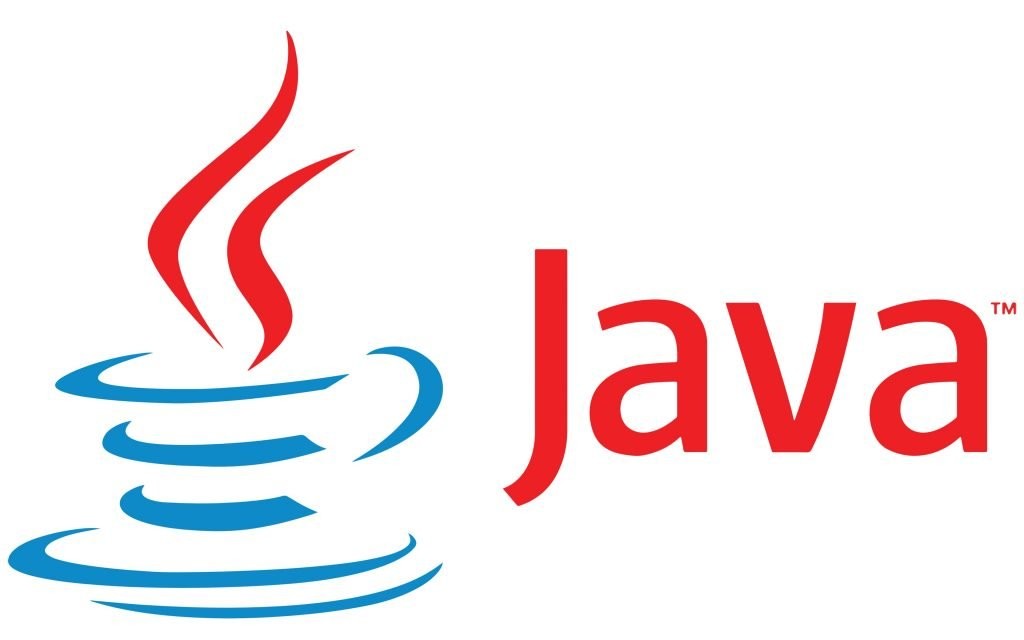Last Updated on July 24, 2024
The Java Singleton Pattern is a creational design pattern that ensures a class has only one instance and provides a global point of access to that instance.
At its core, the pattern’s primary purpose is twofold: to ensure that a class has only one instance and to provide a global point of access to that instance. This seemingly simple concept has far-reaching implications for application design and resource management.
The Need for Singleton Pattern
The control over instance creation is a key aspect of the Singleton pattern.
By restricting the instantiation of a class to a single object, developers can prevent scenarios where multiple instances might lead to inconsistent state, resource conflicts, or unnecessary duplication.
This control is particularly valuable in situations where having multiple instances of a class could result in incorrect program behavior or excessive resource consumption.
For example, in a logging system, multiple logger instances might lead to file access conflicts or inconsistent log entries.
Providing a global access point is another crucial feature of the Singleton pattern.
This centralized access simplifies the overall architecture of an application by eliminating the need to pass an instance through multiple layers of code. Instead, any part of the application can easily obtain a reference to the Singleton instance, promoting a cleaner and more maintainable codebase.
This global accessibility is particularly useful for services that need to be consistently available throughout an application, such as configuration managers or connection pools.
The Singleton pattern excels in managing shared resources. In scenarios involving database connections, file systems, or thread pools, ensuring that only one instance controls these resources prevents conflicts and improves overall resource utilization.
By centralizing resource management, the Singleton pattern helps maintain consistency and integrity across the application.
Singleton Pattern Challenges
However, it’s crucial to note that the Singleton pattern is not without its challenges.
Thread safety is a significant concern, especially in multi-threaded applications. The basic implementation of a Singleton is not thread-safe, and care must be taken to ensure proper synchronization to prevent race conditions during instance creation.
Various techniques, such as double-checked locking or the use of static inner classes, can address these thread safety concerns.
Additionally, the global nature of Singletons can sometimes lead to tightly coupled code, making unit testing more challenging.
Overuse of Singletons can result in a design where too many components depend on global state, potentially reducing modularity and flexibility.
Java Singleton Pattern Implementation
Here are the key principles for implementing a Singleton pattern in Java:
- Private constructor: Prevent direct instantiation by making the class constructor private.
- Static instance: Create a private static instance of the class.
- Global access point: Provide a public static method to get the instance.
- Thread safety: Ensure thread-safe instantiation in multi-threaded environments.
- Lazy initialization: Create the instance only when it’s first requested (optional).
There are several ways to initialize a Singleton pattern in Java, each with its own advantages and trade-offs. Here are the main approaches:
Eager Initialization
Eager initialization in the Singleton pattern involves creating the instance at class loading time.
This approach offers several advantages. It’s simple to implement, requiring just a private constructor and a static final instance.
It’s inherently thread-safe without needing explicit synchronization, as the JVM handles class loading. The getInstance() method is straightforward and efficient, simply returning the pre-created instance. This guarantees the Singleton’s availability and eliminates null checks.
Example:
public class EagerSingleton {
private static final EagerSingleton instance = new EagerSingleton();
private EagerSingleton() {}
public static EagerSingleton getInstance() {
return instance;
}
}Main drawback of eager initialization is that the instance is created regardless of whether it’s used, potentially wasting resources if the Singleton is rarely needed or resource-intensive.
This can impact application startup time, especially if the Singleton’s initialization is complex. Error handling is limited; exceptions during instance creation can’t be caught or handled gracefully.
The approach lacks flexibility, making it challenging to implement parameterized constructors or alter the instantiation process at runtime.
Eager initialization is best suited for scenarios where the Singleton is lightweight, frequently used, and has simple initialization. It’s ideal when the application always needs the instance and when creation costs are low.
Non-thread-safe Lazy Initialization
Non-thread-safe lazy initialization in the Singleton pattern delays instance creation until the first request, offering a balance between resource efficiency and simplicity.
This approach creates the instance only when needed, potentially saving resources and improving application startup time, especially beneficial for resource-intensive Singletons or those rarely used.
The implementation is straightforward, with a null check in the getInstance() method determining whether to create a new instance.
This simplicity makes the code easy to understand and maintain. It also allows for flexible initialization, accommodating runtime parameters or conditions, and enables error handling during instance creation.
Example:
public class LazySingleton {
private static LazySingleton instance;
private LazySingleton() {}
public static LazySingleton getInstance() {
if (instance == null) {
instance = new LazySingleton();
}
return instance;
}
}However, this method has significant drawbacks, primarily its lack of thread safety.
In multi-threaded environments, it can lead to the creation of multiple instances, violating the Singleton principle.
Race conditions may occur when multiple threads simultaneously check for a null instance, potentially resulting in separate instance creations. Additionally, without proper synchronization, memory inconsistencies can arise, where changes made by one thread aren’t immediately visible to others.
Performance considerations include a slight overhead from the null check on every getInstance() call. The static nature of the instance can also complicate unit testing, making it challenging to mock or replace the Singleton for isolated tests.
Thread-safe Lazy Initialization
Thread-safe lazy initialization in the Singleton pattern combines the benefits of lazy loading with thread safety, addressing key concerns in multi-threaded environments. This approach ensures that only one instance is created, even when multiple threads attempt to access it simultaneously.
This method offers several advantages. It guarantees thread safety, preventing the creation of multiple instances in concurrent scenarios.
Lazy initialization conserves resources by creating the instance only when first requested, beneficial for resource-intensive Singletons or those rarely used.
It allows for flexible initialization, potentially accommodating runtime parameters or complex setup processes. Error handling during instance creation is also possible.
Example:
public class ThreadSafeLazySingleton {
private static ThreadSafeLazySingleton instance;
private ThreadSafeLazySingleton() {}
public static synchronized ThreadSafeLazySingleton getInstance() {
if (instance == null) {
instance = new ThreadSafeLazySingleton();
}
return instance;
}
}However, the use of synchronization introduces a performance overhead, as threads must wait for the synchronized method to complete, even after the instance is created.
This can become a bottleneck in high-concurrency situations. The synchronized keyword on the method level is a relatively coarse-grained lock, potentially causing unnecessary blocking.
While this method ensures correct behavior in multi-threaded environments, it may introduce unnecessary overhead in applications with low contention or where the Singleton is frequently accessed.
Singleton Pattern Shortcommings
The Singleton pattern, while widely used, faces significant challenges when it comes to reflection and serialization in Java. These mechanisms can potentially break the Singleton’s fundamental guarantee of a single instance, leading to unexpected behavior and potential security risks.
Java’s reflection API provides powerful capabilities to examine, modify, and instantiate classes at runtime. This power, however, can be used to circumvent the Singleton pattern’s safeguards.
Even with a private constructor, reflection allows for the creation of multiple instances of a Singleton class:
public class Singleton {
private static Singleton instance = new Singleton();
private Singleton() {}
public static Singleton getInstance() { return instance; }
}
// Breaking Singleton using reflection
Constructor<Singleton> constructor = Singleton.class.getDeclaredConstructor();
constructor.setAccessible(true);
Singleton newInstance = constructor.newInstance();This code bypasses the private constructor, creating a new instance distinct from the Singleton’s intended single instance. Such behavior violates the Singleton principle and can lead to unexpected state management issues in applications relying on the Singleton’s uniqueness.
Serialization poses another significant challenge to the Singleton pattern. When a Singleton is serialized and then deserialized, it can result in the creation of a new instance, again breaking the single instance guarantee:
public class Singleton implements Serializable {
private static Singleton instance = new Singleton();
private Singleton() {}
public static Singleton getInstance() { return instance; }
}
// Serialization and deserialization
ObjectOutputStream out = new ObjectOutputStream(new FileOutputStream("singleton.ser"));
out.writeObject(Singleton.getInstance());
out.close();
ObjectInputStream in = new ObjectInputStream(new FileInputStream("singleton.ser"));
Singleton deserializedInstance = (Singleton) in.readObject();
in.close();In this scenario, deserializedInstance is a new object, distinct from the original Singleton instance. This can lead to multiple instances of the Singleton coexisting, potentially causing state inconsistencies and logical errors in the application.
Alternative approaches, such as using enums for Singletons, can mitigate some of these issues. Enum Singletons are inherently immune to reflection attacks and handle serialization correctly by default.
Enum Singleton Pattern
The Enum Singleton pattern in Java provides a unique approach to implementing the Singleton design pattern, leveraging the language’s enum type.
It’s inherently thread-safe, as Java guarantees that enum values are initialized only once in a thread-safe manner. This eliminates the need for complex synchronization mechanisms. Enum Singletons are also serialization-safe by default, preventing the creation of multiple instances through serialization/deserialization.
Enum Singletons are immune to reflection attacks that can break other Singleton implementations. They also prevent multiple instantiation in complex scenarios involving multiple class loaders.
Enum Singleton offers a concise and effective way to create a Singleton in Java:
public enum EnumSingleton {
INSTANCE;
// Methods and fields
public void doSomething() {
// Singleton behavior
}
}Enums lack flexibility in initialization, as all enum constants are created when the enum is loaded. This makes it challenging to implement lazy loading or to use parameterized constructors. Enum Singletons cannot extend other classes, which may be a constraint in some design scenarios.
They may not be suitable for all situations, particularly when the Singleton needs to extend a class or implement interfaces that aren’t possible with enums. In some cases, especially with complex Singletons, using an enum might seem less intuitive to developers accustomed to class-based Singletons.
Despite these limitations, Enum Singleton is often considered the preferred way to implement the Singleton pattern in Java due to its simplicity, built-in thread safety, and serialization safety.
It’s particularly suitable for straightforward Singletons that don’t require complex initialization or inheritance.
Conclusion
The Singleton pattern in Java, while seemingly simple, embodies a complex interplay of design considerations, performance implications, and potential pitfalls.
The pattern’s vulnerabilities to reflection and serialization highlight the importance of understanding Java’s deeper mechanisms. These challenges underscore the need for robust implementation strategies, especially in scenarios involving advanced Java features or in security-sensitive contexts.
The implementation of Singleton requires careful consideration.
Different approaches—eager initialization, lazy initialization, thread-safe versions, and enum-based implementations—each offer distinct trade-offs between simplicity, performance, thread safety, and flexibility.
Developers must weigh these factors against their specific application requirements.
Despite these challenges, when appropriately applied, the Singleton pattern remains a valuable tool in a developer’s arsenal. It’s particularly useful in scenarios like managing connection pools, caches, thread pools, or configuration settings.
Ultimately, the decision to use a Singleton should be made judiciously, with a clear understanding of its implications on system design, performance, and maintainability.
When employed thoughtfully, it can contribute to creating efficient, well-structured applications.

